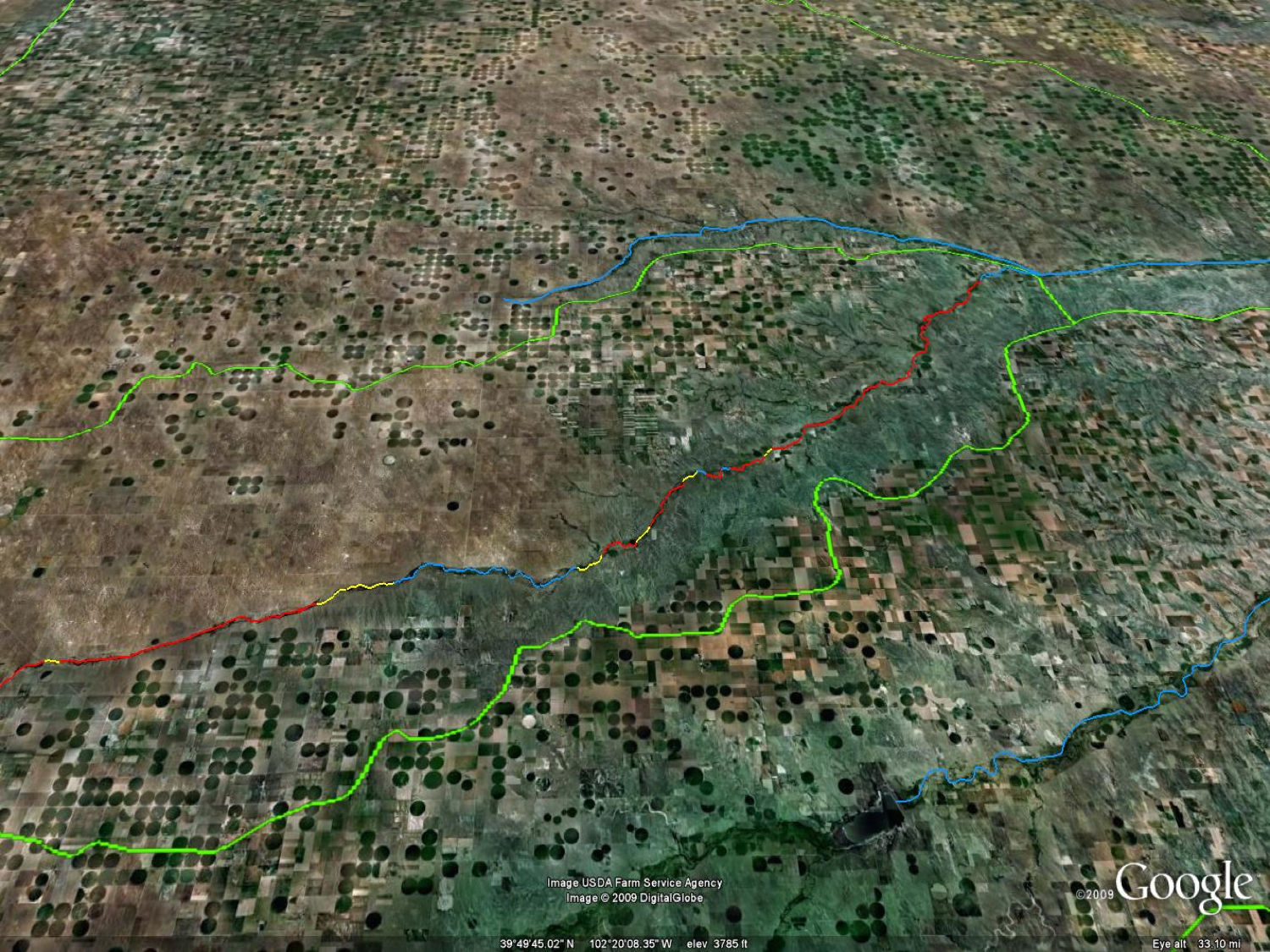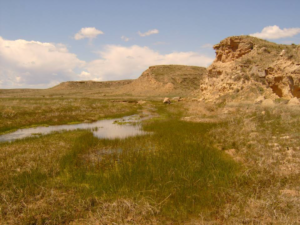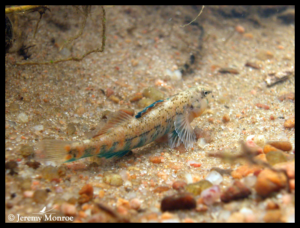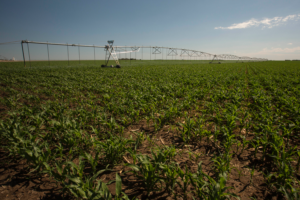
A Google Earth image of the crop circles in the lower Arikaree River watershed, highlighting the river reaches that were dry (red), disconnected pools (yellow), and flowing (blue) at the lowest water in late summer 2007. Only one segment of 9 miles of flowing river remained as habitat for fish. The river flows from left to right. Image created by Jeff Falke, University of Alaska Fairbanks.
Farmers in the Great Plains of Nebraska, Colorado, Kansas and the panhandle of Texas produce about one-sixth of the world’s grain, and water for these crops comes from the High Plains Aquifer — often known as the Ogallala Aquifer — the single greatest source of groundwater in North America. A team of researchers, including Colorado State University Professor Kurt Fausch and Jeff Falke, a CSU alumnus and an assistant professor at the University of Alaska Fairbanks, have discovered that more than half a century of groundwater pumping from the aquifer has led to long segments of rivers drying up and the collapse of large-stream fishes.
If pumping practices are not modified, scientists warn that these habitats will continue to shrink, and the fish populations along with them.
The research team combined modeling from the past and future to assess changes in Great Plains streams and their fish populations associated with groundwater pumping from the High Plains Aquifer. The findings have implications for watersheds around the world, because irrigation accounts for 90 percent of human water use globally, and local and regional aquifers are drying up.
A ‘train wreck’

Fausch said the study results are sobering. Based on earlier observations and modeling by Falke and a team of graduate students and faculty at CSU, the Arikaree River in eastern Colorado, which is fed by the aquifer and used to flow about 70 miles, will dry up to about one-half mile by 2045.
“You have this train wreck where we’re drying up streams to feed a growing human population of more than 7 billion people,” Fausch said.
Fausch described the situation as a “wicked problem,” one with no good solution. “More water is pumped out every year than trickles back down into the aquifer from rain and snow,” he said. “We are basically drying out the Great Plains.”
Pumping has dried up streams, small rivers
Since the 1950s, pumping has extracted nearly as much water as what exists in Lake Erie — about 100 trillion gallons — and almost none of it trickles back into the aquifer.
“This pumping has dried up long segments of many streams and small rivers in the region,” Fausch said. From 1950 to 2010, a total of 350 miles of stream dried up in the large area the team studied in eastern Colorado, southwestern Nebraska and northwestern Kansas. “Our models project that another 180 miles of stream will dry up by 2060,” Fausch said.

The loss of fish in the area is also a concern. “What we’re losing are the fishes that require habitat found only in the rivers and large streams of the region, and replacing them with those that can survive in the small streams that are left,” Fausch said. “We are losing whole populations of species from rivers in that region because there’s no habitat for them.”
As an example, seven of the 16 native fish species that were once found in the Arikaree River have disappeared since the first surveys were done in the 1940s. These fish include small minnows, suckers and catfish, species that the CSU scientist said are not among those that are currently federally endangered or threatened, so there’s little regulatory authority to preserve the habitats.
“We’re losing fish that people really don’t know about,” said Fausch. “They are cool and very beautiful, but not charismatic.”
Losing a river means losing more than fishes
Effects from the groundwater pumping will extend beyond the fishes and streams, too. Farmers in that area hope to conserve enough water so that future generations can continue to work on the land. And the everyday places that benefit from water could also disappear.
“If they lose the river, they’ll not only lose fishes, but they’ll also lose water for their cattle, and cottonwoods that provide shade,” Fausch explained. “They also lose the grass that grows in the riparian zone, which is critical forage for cattle in summer. Some of that’s your livelihood, but it’s also the place you go for picnics, and to hunt deer and turkeys. If you lose the river, you lose a major feature of what that landscape is.”

Fausch said that there are some signs of progress, despite the grim findings. Local officials have put meters on wells to ensure that farmers pump only the amount of water allowed under their permits. And farmers are always experimenting with new technology that will allow them to optimize the amount of water they use to achieve the highest crop yields, since it takes electricity to pump the water from deep underground and this is an important cost to them. This doesn’t mean that the groundwater levels that feed streams are not declining, but instead are declining at a slower rate than in the past, he said.
Growing dryland crops an option
One additional option, though it might be a hard sell, is for farmers to grow dryland crops, meaning that they rely only on rainfall each year, instead of pumping water. The problem is the crop yields then vary widely from year to year, depending on the rain.
“Every farmer understands that eventually they will no longer be able to afford to pump as much water,” said Fausch. “Farmers are amazing economists. New options such as economical drip irrigation are being discussed, and farmers will likely switch to these options when they become available.”
Fausch, who has studied rivers throughout his entire career, grows wistful when talking about the research. “When we lose these rivers, we will lose them for our lifetime, our children’s lifetime, and our grandchildren’s lifetime,” he said.
Even if all pumping were stopped tomorrow, the aquifer would refill very slowly, over the next 100 years or more, said Fausch. As the groundwater table rose, rivers would start to flow again.
“Groundwater declines are linked to changes in Great Plains stream fish assemblages” was published in Proceedings of the National Academy of Sciences.
Falke received his doctorate in fisheries biology from CSU in 2009. The research team includes scientists from Kansas State University, Tennessee Technological University, U.S. Geological Survey, Colorado Parks and Wildlife, Westar Energy and The Nature Conservancy.